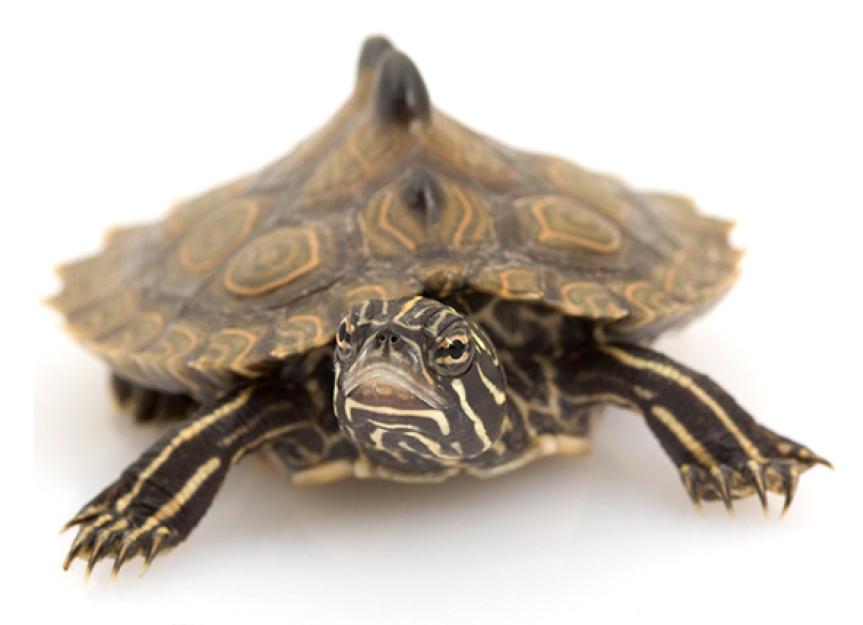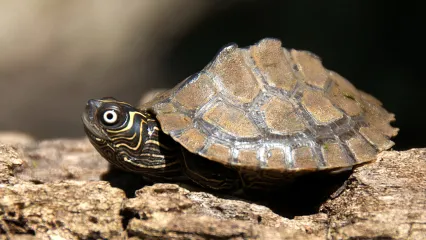When considering adding a pet turtle to your household, it’s essential to gather information about the specific species you are interested in. One popular choice for many turtle enthusiasts is the Mississippi Map Turtle (Graptemys pseudogeographica kohnii). Known for its distinct markings and fascinating behavior, this aquatic reptile can make a captivating addition to your home aquarium.

Credit: www.petmd.com
The Basics of the Mississippi Map Turtle
The Mississippi Map Turtle is native to the central and southeastern parts of the United States. It derives its name from the intricate map-like patterns on its shell, which resemble the vibrant topography of rivers and streams. These turtles have a fairly long lifespan, with reports suggesting that they can live up to 30 years in captivity with proper care.
Growth and Size
As hatchlings, Mississippi Map Turtles are tiny, usually measuring between 1 to 2 inches (2.5 to 5 cm) in length. However, these turtles can grow quite large over the years. The growth rate of a Map Turtle depends on multiple factors such as diet, habitat conditions, and overall health. They undergo a significant growth spurt during their first few years of life.
On average, adult female Mississippi Map Turtles can reach lengths of 6 to 10 inches (15 to 25 cm) when measured from the front of the shell to the back (carapace length). Males, on the other hand, tend to be smaller, measuring around 4 to 6 inches (10 to 15 cm) in length. It’s important to note that these measurements are approximate averages, and individual turtles may vary in size.
Not only do Map Turtles grow in length, but they also gain weight as they mature. Adult females can weigh between 1.5 to 2.5 pounds (0.7 to 1.1 kg), while adult males typically weigh less, ranging from 0.5 to 1.5 pounds (0.2 to 0.7 kg).
Factors Influencing Growth
The growth of a Mississippi Map Turtle can be affected by various factors, including nutrition, habitat, and overall well-being. Here are a few key factors that can impact their growth:
Diet:
A well-balanced diet is crucial for the healthy growth of a Mississippi Map Turtle. These turtles are omnivorous, meaning they eat both plants and animal matter. In their natural habitat, they mostly consume aquatic plants, insects, smaller invertebrates, and occasional fish. A varied diet that includes commercial turtle pellets, leafy greens, vegetables, and small amounts of protein can promote steady growth.
Habitat:
The size and conditions of their habitat can also affect a Map Turtle’s growth. Inadequate space, lack of filtration, and poor water quality can hinder their growth potential. A suitable tank size for an adult Mississippi Map Turtle should be at least 50 gallons, with clean, well-maintained water and appropriate basking areas.
Health:
Regular veterinary care, including check-ups and proper treatment for any illnesses or infections, can contribute to the overall well-being and growth of a Map Turtle. Prevention and identification of health issues are essential in promoting healthy growth.
The Importance of Proper Care and Maintenance
To ensure that your Mississippi Map Turtle reaches its full growth potential, providing a suitable environment and diligent care is crucial. Here are some general care tips:
- Provide a spacious tank with clean and appropriately heated water.
- Include a basking area with a heat lamp to allow the turtle to regulate its body temperature.
- Ensure a varied diet, encompassing both plant and animal matter.
- Monitor water quality and perform regular tank maintenance.
- Offer opportunities for exercise and mental stimulation, such as hiding spots and toys.
- Seek veterinary care when necessary.
:strip_icc()/GettyImages-138875571-5830ec063df78c6f6ad8ac38.jpg)
Credit: www.thesprucepets.com
Wrapping Up
Understanding the growth potential of a Mississippi Map Turtle is essential for providing appropriate care and creating the ideal environment for your turtle companion. By offering a healthy diet, a suitable habitat, and regular veterinary attention, you will be helping your turtle thrive and reach its maximum size. Remember, every turtle is unique, and individual growth rates may vary, so be prepared to adapt your care approach accordingly.





Leave a Reply